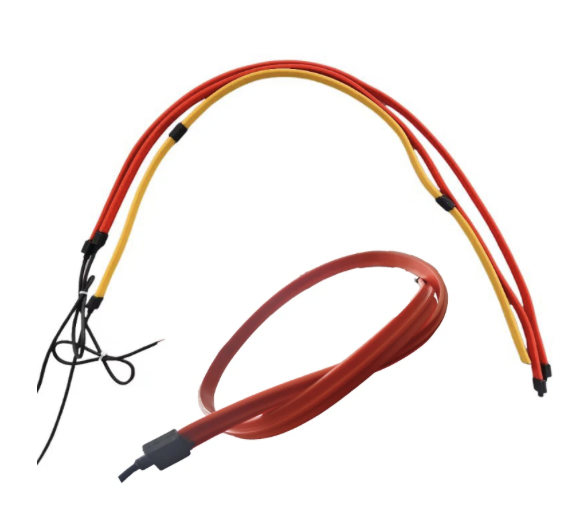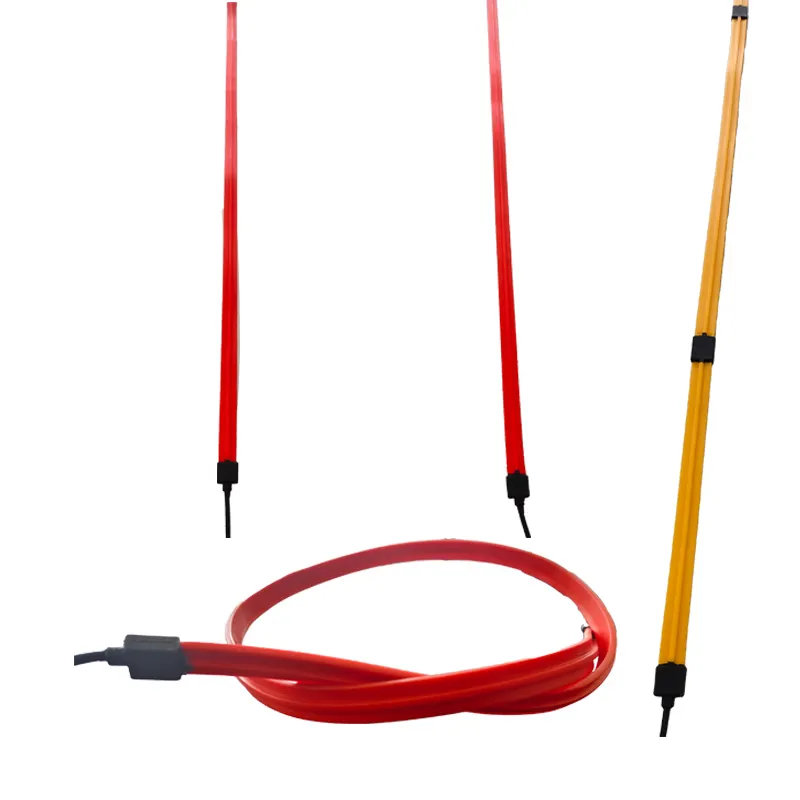Մարմնի դիտարկումը օպտիմալ աշխատանքի համար
Կապա(nonatomic vs. Տինեդ Կապագի և Ալյումինի համեմատություն
Ընտրեք համապատասխան նյութ կոնդուկտիվ տեյպի համար, որպեսզի ստացեք լավագույն աշխատանք. Կապագն էլեկտրական հաղորդականության մասին հայտնի է, որովհետև այն հաճախակի օգտագործվում է բարձր աշխատանքային կիրառումներում։ Սա icularly օգտագործվում է grounding և shielding կիրառություններում, որտեղ copper foil strip-ը փակված է օգտագործման համար։ Կապակցիոն աղարկի սահմանափակ վիճակիչ .Այնուամենայնիվ, թիթեղյա պղինձը շատ հարմար է կիրառել այն տեղերում, որտեղ ամրությունը կարևոր է. օրինակ՝ խոնավ պայմաններում կամ փողոցային միջավայրերում, թիթեղյա պղինձը ավելի դիմացկուն է կոռոզիայի նկատմամբ շնորհիվ թիթեղի շերտի: Վերջապես, ալյումինը, չնայած պղնձի համեմատ ավելի ցածր է հաղորդականությամբ, սակայն ապահովում է ցածր արժեքով և թեթև լուծում: Այն ունի հատուկ հատկություններ, որոնք հատկապես օգտակար են այն դեպքերում, երբ պահանջվում է բարձր կատարում, ցածր քաշ և բարձր կոռոզիայի դիմացկություն: Յուրաքանչյուր նյութ իր հերթին ունի որոշակի առավելություններ, որոնք որոշում են իրենց կիրառման ոլորտները:
Հաղորդականության և հաստության կարևորությունը
Պեղուստի կապակցության վերաբերյալ խնդիրը կարևոր է, քանի որ այն ազդում է նրա հաղորդական հատկությունների և մեխանիկական հատկությունների վրա։ Պեղի հոսքի ուժը կախված է նրա հաստատությունից և շատ կարևոր է՝ որպեսզի հանգունեցնել սարքերի վերջնական ջերմանումը և հնարավոր սխալները։ Ընդհանուր առմամբ, չափագիրը ավելի բարձր է, այն ավելի փակ է, ինչը կարող է սահմանափակում լինել հոսքի ուժի և արդյունավետության բարձր ուժի կիրառություններում։ Հաստատության նորմատիվների համապատասխանությունը էլեկտրական պահանջներին հետևաբար կարևոր է՝ որպեսզի հանգունեցնել անխանգույն աշխատանքը։ Հաստատությունը պահպանելու կարևորությունը կարևոր է ոչ միայն տեյպի հաղորդականությունը պահպանելու համար, այլ նաև տեյպի կառուցվածքային ամբողջությունը պահպանելու և էլեկտրական սխալների դիմաց պահպանելու համար։ Այն կարևոր է ոչ միայն գեներատորի կողմից, այլև նախագծման կողմից՝ ոչ միայն արդյունավետության համար, այլև էլեկտրական համակարգի կյանքի համար։
Կպման տիպեր՝ հաղորդական և ոչ հաղորդական
Դարձնող նյութ ընտրելը կարևոր է, որը բավարարում է պահանջվող գործառնային 특성ներին՝ ճշգրիտ գործառույթի ստիպելու համար էլեկտրական շղթաներում և կիրառություններում։ Կոնդուկտիվ ցիմները օգնում են կազմել էլեկտրական կապ, ինչպես նաեւ առաջացնում են առանց խախտությունների սիգնալի հոսքը՝ մասնավորապես ավանդական շղթաներում։ Այս ցիմները նաեւ կոնդուկտում են էլեկտրություն կապակցված մակերևույթների վրա՝ մետաղական մասնիկներով արտապատկերված են։ Եվ հակառակը՝ ոչ կոնդուկտիվ ցիմները համապատասխան են, երբ պահանջվում է անջատումը՝ կրճատումներից խուսափելու համար։ Սա կարևոր է կիրառությունների համար, որտեղ էլեկտրական անջատումը հիմնական է։ Ցիմի լուծումը ընտրելիս ազդեցություն ունի ոչ միայն էլեկտրական գործառույթի վրա, այլ նաեւ արտադրանքի տարիքի և վավերության վրա։ Ցիմի 특ություններին հարցնելը կարևոր է՝ պահանջվող գործառույթային ստանդարտները հաստատունորեն իրականացնելու համար, ինչը արդյունավետություն և գործառույթի բարեարարություն է ապահովում արդյունքային համարիկի վրա։
Վոլտաժի և ջերմաստիճանի SPEC-երի գնահատում
Վոլտաժի պահանջումների համապատասխանումը Ձեր սարքին
ՊԵՏՐՈՒԹՅԱՆ ՍՏՐԻՓ 1-4 Կամայական սարքի դեպքում կարևոր է գνահատել ձեր ստեղծագործության վոլտաժային պահանջները, որպեսզի պետրության ստրիփերը օգտագործվեն ան전ուրեցումով և օպտիմալ ձևով։ Դրանք չի պետք միայն լինել վոլտաժային մակարդակների համար կամ բարձրացուցիչ, որոնք պահանջվում են ձեր համակարգի համար՝ խուսափում ուղեծրագրումից և սարքի սխալից, այլև պետք է գիտել գերակայության և աշխատանքային վոլտաժները։ Դրանք ստուգելով դուք ոչ միայն համոզվում եք աշխատանքային հնարավորության մասին, այլև պաշտպանում եք դարձնելուց դեռ կարող եղած վատեային դեպքեր։ Այս պատճառով, ձեր կառուցվածքի տեխնիկական պարամետրերը պետք է համապատասխանեն պետրության ստրիփի նշված սահմանափակումներին՝ առավելագույն արդյունավետության և կախվածության համար։
Տեմպերատուրային հեռացում երկար տևում
Դեղին ջերմական հաստատությունը կարևոր է՝ coppеr foil strips -ի կյանքի ժամանակը առավելացնելու համար։ Դուրս գալու համար ցանկացած / բարձր արդյունավետական 특성ների, շերտերը պետք է կարողանան լավ արարել ջերմաստիճանի տարբերությունների դեմ և պահել լավ որակ և արդյունավետություն տարբեր ամրապնդման պայմաններում։ Ադրևորեն, նյութերը պետք է ունենան բարձր ջերմական գնահատականներ՝ թողնելու համար որոշակի ջերմաստիճաններում, չորոզում իրենց ամբողջությունը։ Ջերմական հատկությունների կառավարումով, դուք խաղացում եք կարևոր դեր սարքերի կառուցվածքների կյանքի ժամանակում, որպեսզի դրանք կարող լինեն ներկայացված ամենախնդիր կիրառումներին, չորոզում արդյունավետությունը կամ ան전ականությունը։
Գերջերմության անտառների հանգուլիություն
Պարբերության գլանի մանրահակասագրության ռիսկը շատ կարևոր է այդպիսի համակարգերի անվտանգության և արդյունավետության համար: Williams dispersion techniques are important, since the heat generation would result in device failures and safety issues. Տեմպերատուրայի նվազեցումը և օդի շարժման պահպանումը երկու կարևոր քայլեր են այս ռիսկի կառավարման համար: Կանոնավոր փորձարկումները և տեմպերատուրայի ստորագրությունը կարող են խուսափել հետագա գործառնային խնդիրներից, այսպիսով՝ դրանք բոլորը կարևոր պահպանագրական աշխատանքներ են երկար ժամանակի վերասերության և արդյունավետության համար: Այսպիսով, կենտրոնացվելով այս տակտիկաների շուրջ, դուք տեսնեք, որ ձեր մանրահակասը կլինի լավ և անվտանգ շատ տարի օգտագործման ընթացքում։
Ֆունկցիոնալ պահանջները. Shielding, Grounding, և Signal Transfer
EMI/RFI Shielding Դիմումներ
ԷՄԻ-ն կարող է շատ բարձր ստիպել արդյոքը՝ համարյալ է լավ ստիպում։ Պղինձը՝ հայտնի բարձր հաղորդականության համար, icularly լավ է ստիպումների համար շատ հաճախորդների համար։ Լավ դիզայնավորված և ներդրված պղինձային ստիպումի համակարգ կարող է փոխարկել տվյալների կորցնումը՝ մասնավորապես բարձր հաճախության (օրինակ՝ առանց համարակալության հասանելիություն) և/կամ ավելի ạyական էլեկտրոնային սարքերի կիրառման դեպքում։ Սա համոզում է, որ էլեկտրոնային կոմպոնենտները աշխատում են հավասարակշռյալ և արդյոքորեն այն միջավայրում, որտեղ կարող է սպասվել էլեկտրոմագնիսական 섭ականում։
Գրունդավորում ամանակի և համաձայնության համար
Երկային միացումը շատ կարևոր է համարելու համար էլեկտրական հարվածությունը և սարքելու համար դիրքային և սարքավորման համար։ Այս գործակալական ստանդարտներին համապատասխանելու համար, դուք չպետք է օգտագործեք միայն ճիշտ երկային միացում օգտագործողի և սարքի պահպանման համար։ Դա մասնավորապես կապված է երկային ազատ ծառայությունների միացմամբ, որպեսզի համապատասխանել ստանդարտներին, որպեսզի այն էլեկտրական ինֆրաստրուկտուրան աշխատի, որի վրա կախված է ամենինք։ Այս ուղեցուցիչներին հետևելով՝ դուք ոչ միայն համոզված կլինեք, որ համապատասխանում եք, այլ և ավելի աمن տեխնոլոգիական միջավայր է ապահովում։
Սիգնալի փոխանցման արդյունավետություն
ՍIGNAL փոխանցման դերավորությունը սեղմանորեն կապված է սարքի հիմնավորումների սարքի հիմնավորումների սարքի հիմնավորումների հետ։ Կարևոր է կարգավորել նրա ռեզիստանսը և ունենալ լավ կապակցություններ, որպեսզի ստանալ առավել բարձր փոխանցման դերավորություն։ Կարող է օգնել պարբերական դիտարկումը ամբողջ համակարգի կառուցվածքին՝ որպեսզի որոշվեն հնարավոր սIGNAL անգամները։ Այս դինամիկ 특성ը թույլ է տալիս ժամանակակից حيح정ները՝ որոնք նույնիսկ ավելի լավ ամբողջական դերավորություն են տալիս և կարող են հանգեցնել որոշ կիրառումներում՝ տեղի ունենող գործողություններից տվյալների փոխանցման համակարգերից մինչև ուժի էլեկտրոնիկային մոդուլներին, որոնք պետք է գործարկեն օպտիմալ դերավորությամբ, որը կարող է փոփոխվել ժամանակի ընթացքում։
Ամպրոնային համոզություն և հավասարակշռություն
Humid պայմաններում կորոզիայի ռեզիստանսը
Ẩm ướt trong môi trường, nên chọn các vật liệu có khả năng chống ăn mòn cao để kéo dài tuổi thọ của dải băng đồng. Các yếu tố môi trường như độ ẩm và độ ẩm không khí có thể gây ra sự ăn mòn nhanh hơn, dẫn đến giảm hiệu suất và chức năng của thiết bị. Chỉ chọn băng đồng có khả năng chịu được những điều kiện này tự nhiên. Việc kiểm tra thường xuyên và sử dụng các lớp phủ bảo vệ có thể tối thiểu hóa những tác động này, "để duy trì độ tin cậy lâu dài". Hoặc, đồng tự nhiên tạo thành một lớp patina, tạo thành một hàng rào và do đó, cung cấp một mức độ bảo vệ nhất định; tuy nhiên, nó có thể không đủ trong mọi trường hợp. Do đó, các bước bổ sung như lớp phủ bảo vệ thường là cần thiết để cải thiện hiệu suất.
Դուրանույթը մեխանիկական ստրեսի դեպքում
Պարն գետինը կունենա մեխանիկական ստրես, չնյութավորելով համապատասխան համարժեքությունների կամ էլեկտրոնային հատկությունների։ Հավանդակությունը ապահովված է կարևորությամբ, ինչպես երբ պարն գետինը ծռում է, շրջում կամ այլապես մեխանիկականորեն ստրեսավորվում։ Գործական փորձեր տարբեր մեխանիկական դեպքերում օգտագործվում են հարցերի գնահատման և հատկանշանների հայտնաբերման համար։ Սակայն, կարելի է ընտրել ավելի հաստ միավորներ ավելի լավ հավանդակության համար՝ որը կլինի ավելի կարևոր լուծում ազդեցության դեպքում։ Սակայն, ավելի հաստ շերտերը կարող են ազդել այլ հատկությունների վրա, ինչպես համարժեքություն և հակառակագործություն։ Այսպիսով, պետք է լինի լավ հավասարում միջև գերազանց հավանդակություն և նվազագույն գործառույթ։
UV և քիմիական ազդեցությունների հաշիվ
UV- ն զգալի ազդեցություն ունի պղնձի պղնձի ծերացման վրա, ուստի արտադրանքի կյանքի երկարացման համար նախադրյալ ընտրություն են UV- ի դիմադրող նյութերը: Երբ միջավայրում, որտեղ քիմիական նյութերի ազդեցությունը մտահոգիչ է, կարեւոր է նաեւ նախագծել այդ պայմանների համար, որպեսզի կանխվի վաղ ձախողումը: Կարեւոր է իմանալ միջավայրը, որտեղ պղնձի ժապավենները կօգտագործվեն նյութի ընտրության համար: Հետեւաբար, ինչպես UV լույսի, այնպես էլ քիմիական նյութերի ազդեցության վրա հիմնված վերլուծությունը թույլ է տալիս ընտրել ճիշտ պղնձի պղնձը, որպեսզի պղնձը կարողանա դիմակայել թշնամական պայմաններին ՝ առանց կորցնելու իր արդյունավետությունը:

Վստահելի արտադրողի ընտրություն
Վավերագրություններ եւ արդյունաբերական ստանդարտներ
Երբ գնահատում եք մի մեդյան սալի պատրաստիչ, կարևոր է հաշվի առնել ստացված արդյունավետությունները և գործնական ստանդարտները։ Այդպիսի արդյունավետությունները նաև համոզում են, որ կարող եք վստահել պատրաստիչին, քանի որ այն համաձայն է որոշակի աمنականության և որակի ստանդարտներին։ Օրինակ, ISO ստորագրությունները և միջավայրի օրենքներին համաձայն գործումը կարող է տալ համոզություն, որ աշխատում եք անդամական և արժանի հաจորդի հետ։ Հասկանալու համար որոշ ստանդարտները (Այս դեպքում, ստանդարտները են՝ " Կապակցիոն աղարկի սահմանափակ վիճակիչ "), դուք կարող եք ավելի հեշտ գտնել արժանի պատրաստիչ, ով կաշխատի ձեր պրոեկտի վրա։
Պարունակության օպցիաներ միանալիս պահանջների համար
Պատվիրելու – Եթե դուք աշխատանք եք կատարում պրոեկտներում, որոնց հատուկ պահանջները ընդհանուր լուծումները չեն կարող համապատասխանել։ Գտնեք իրավիճակների մասին, որոնք բարձրացնում են պատվիրում և համոզվում եք, որ լուծումները ստեղծված են համապատասխանելու ձեր պահանջներին։ Ավելի բարդ գիտությունները և տեխնոլոգիաները, որոնք օգտագործվում են համապատասխան պատվիրման համար, կարող են առաջացնել ավելի համապատասխան արտադրանքներ՝ մեծ գերակայությամբ ավելի լավ համապատասխանելու օգտագործման դեպքերին։ Այդպիսով դուք ստեղծում եք ձեր մանգան փուլի շերտերը այնպես, որ կարող եք դրանք պատվիրել ճշգրիտ այնպես, ինչպես ցանկանում եք դրանք օգտագործել՝ անկախ է ձեր ձևերից, չափերից կամ տարբեր ֆունկցիաներից։ Սահմանափակումները, որոնք առաջարկում են այս հնարավորությունները, կարող են խաղացնել կարևոր դեր պրոեկտի հաջողության մեջ։
Երաշխիք և գնումից հետո աջակցություն
Դեղին հետագա սպասարկություն։ Ամբողջ գանձը մ coppеr foil strips-ի համար անհրաժեշտ է։ Սա մեկ եղանակ է ցույց տալ, թե որքան վստահություն ունի թարգմանատու ապրանքի որակին, և որ գնորդները կարող են ստանալ ապահովում լավ ապրանքի ստացման դեպքում, եթե բանները չեն գնահատվում ճիշտ ուղիղ ուղիղությամբ։ Եվ Tất nhiên՝ մեծ հետագա աջակցությունը կարևոր է ցանկացած խնդիրների լուծման համար, որոնք կարող են առաջանալ դրա մուտքագրման հետո։ Լավ արդյունքներ և պակաս կեսանց ժամանակ ստացվում են, երբ ցանկացած հարցերն արագ և արդյունավետ են լուծում, եթե ընտրում եք ընկերություն, որը հայտնի է իր գործնականության առաջնորդությամբ գործունեություն։ Ձեր պրոեկտի սպասարկությունը այս մակարդակում որոշում է շատ հաջողություններ և պրոեկտի կյանքի տևում։
Հաճախ տրամադրվող հարցեր
Ի՞նչ են օգտագործվող հիմնական նյութերը կոնդուկտորային տեփերում։
Օգտագործվող հիմնական նյութերն են՝ մոլիբդեն, գագարիկ մոլիբդեն և ալյումինիում։ Յուրաքանչյուր նյութ առաջարկում է միակ առավելություններ՝ կախված կիրառման վրա, ինչպիսիք են՝ բարձր կոնդուկտություն, կորոզիայի համար անկանխ կամ արժեքավոր տարբերակ։
Ինչպես է ազդում մոլիբդենի գետի հաստությունը արդյունքի վրա։
Պղինս ալյումինի հաստությունը прямыми կարևոր է էլեկտրական վառնագույնության և մեխանիկական ուժեղության, ազդեցությունով հոսք-բարձրացող կարողության և ջերմաստիճանի գերազանցումից պահանջում։ Ավելի հաստ ալյումինի սովորաբար համոզում է ավելի լավ աշխատանքային հասանելիություն և կառուցուալ ամբողջություն։
Երբ պետք է ընտրել էլեկտրական կպչունքներից ոչ էլեկտրական կպչունքներից։
Էլեկտրական կպչունքները ենթադրվում են օգտագործելու համար կիրառությունների դեպքում՝ որոնց պահանջում է էլեկտրական կապումներ, իսկ ոչ էլեկտրական կպչունքները իդեալ են պայմաններում՝ որոնց պահանջում է էլեկտրական հեռացում կրճատումներից պահելու համար։
Հիմանականությունը ինչու է կարևոր պղինս ալյումինի ստրիպների համար։
Հիմանականությունը կարևոր է՝ որպեսզի պղինս ալյումինի ստրիպները կարողանան կանգնացնել միջավայրային փոփոխությունները՝ աշխատանքային պահանջներով առանց վարդագրային անցումների, որը նպաստում է դրանց երկարությունը և ամբողջական սարքի արդյունավետությունը։
Ի՞նչ առանձնահատկություններ կարող են պահպանել պղինս ալյումինից ջերմաստիճանից գերազանցում։
Դուրս գալու համար ջերմաստիճանից գերազանցումից՝ իրականացնելու են հորինացումի առարկաներ, համոզելով ավելի բավարար օդավազումը ստրիպների շուրջև և կատարելով անընդհատ ջերմաստիճանի պայմանների փորձումներ և հետազոտություն։
Հատուկ իմպորտանս ունի բարձր կորոզիայի հաստատությունը Ẩմուշավոր պայմաններում ինչու՞մ:
Բարձր կորոզիայի հաստատությունը պարտադիր է coppеr foil strips -ի կյանքի և գործառնային արժեքի երկարացման համար, քանի որ նեղածությունը կարող է արագացնել վարդագրավորությունը:
Ինչպես է անվատումը նպաստիկության համար ներդրում:
Անվատումը խուսափում է էլեկտրական հարթություններից և համոզում է էլեկտրոնային սարքերի վավերությունը՝ համաձայն արդյունաբերության ստանդարտներին և անվատ միացումների ապահովման հետ:
Ինչ պետք է համոզվել ընտրելիս արտադրիչ coppеr foil strips -ի համար:
Ընտրելիս արտադրիչ, համոզվեք ստանդարտների համաձայնության և ստանդարտներին համապատասխանող սերտիֆիկատների, պարունակության օպցիաների, գարանտիայի և հետագա գնահատման աջակցության մասին՝ որպեսզի համոզվեք որակից և վավերությունից:
Բովանդակության աղյուսակ
- Մարմնի դիտարկումը օպտիմալ աշխատանքի համար
- Վոլտաժի և ջերմաստիճանի SPEC-երի գնահատում
- Ֆունկցիոնալ պահանջները. Shielding, Grounding, և Signal Transfer
- Ամպրոնային համոզություն և հավասարակշռություն
- Վստահելի արտադրողի ընտրություն
-
Հաճախ տրամադրվող հարցեր
- Ի՞նչ են օգտագործվող հիմնական նյութերը կոնդուկտորային տեփերում։
- Ինչպես է ազդում մոլիբդենի գետի հաստությունը արդյունքի վրա։
- Երբ պետք է ընտրել էլեկտրական կպչունքներից ոչ էլեկտրական կպչունքներից։
- Հիմանականությունը ինչու է կարևոր պղինս ալյումինի ստրիպների համար։
- Ի՞նչ առանձնահատկություններ կարող են պահպանել պղինս ալյումինից ջերմաստիճանից գերազանցում։
- Հատուկ իմպորտանս ունի բարձր կորոզիայի հաստատությունը Ẩմուշավոր պայմաններում ինչու՞մ:
- Ինչպես է անվատումը նպաստիկության համար ներդրում:
- Ինչ պետք է համոզվել ընտրելիս արտադրիչ coppеr foil strips -ի համար:

